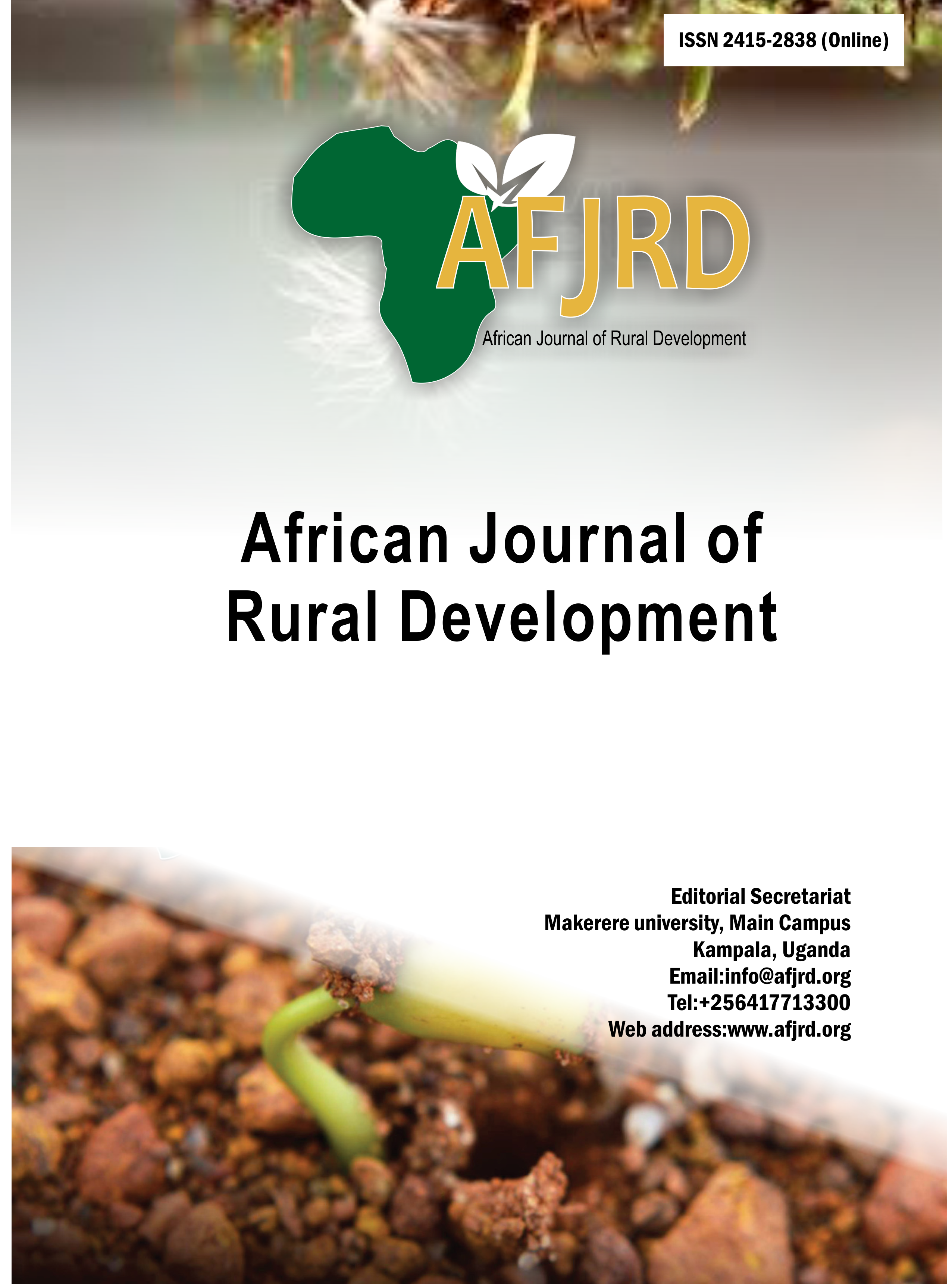Barriers and opportunities for intensification of the coffee-banana agroecosystem of the Mt. Elgon in Uganda
Main Article Content
Abstract
The world human population will reach 10 billion by the year 2050, yet of these 68% will
be living in cities, posing serious threats to food and livelihoods security especially in
low-income countries. This exponential population growth has and will continue to lead
to an increased competition for limited land resources leading to expansion of agricultural
lands and rural settlements into the natural landscape followed by mass deforestation and
cultivation on mountain slopes, exacerbating landslides and soil loss. This challenge will
call for development, innovation and adoption of intensified, efficient and sustainable
agricultural production systems. However, evidence shows that only a few households
manage the desired shift. At the same time, there are prevailing declines in crop yields
in the Mt. Elgon partly due to increased soil degradation leading to recent conversions of
forest land into crop land in the marginal mountain Elgon ecosystems. Using
survey data from 500 farms, intensification pathways of the coffee-banana
farming system were classified using core agricultural intensification surrogate indicators. Cluster analysis
was used to classify, a stochastic frontier model to estimate technical efficiencies of the
pathways and a logit model to assess the driving factors and barriers to agroecological
intensification. Cluster analysis revealed two intensification pathways taken by farmers.
Farmers lose about 50% and 30% of the maximum attainable coffee and
banana output respectively due to inefficiencies, indicating existence of huge opportunities
to increase yields. Coffee variety grown and lack of access to credit
pose opportunities for adoption of the agroecological pathways under study.
Article Details

This work is licensed under a Creative Commons Attribution 4.0 International License.
